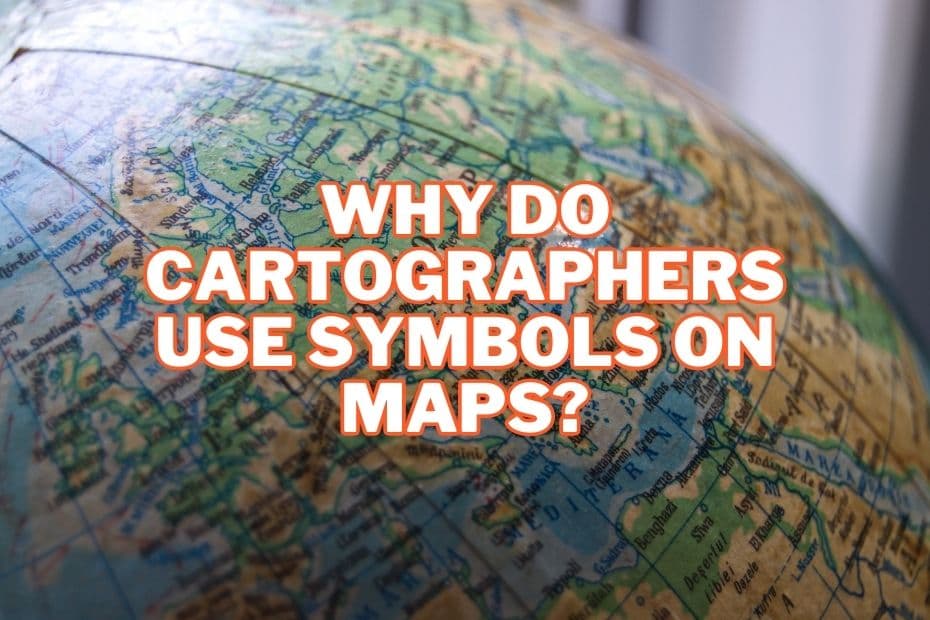Maps have been around for thousands of years, and they have always been essential for navigation, exploration, and understanding our world. However, it’s not just the lines, shapes, and colors on a map that convey information. But why do cartographers use symbols on maps? In this article, we will explore the reasons behind this practice and how it helps us better understand the world around us.
Cartographers use symbols on maps to convey information in a concise and understandable way, show spatial relationships, and provide additional information about features on the map.
What Are Map Symbols?
Map symbols are graphical representations that cartographers use to denote a particular feature or attribute on a map.
They help convey information about the geographical features, infrastructure, and cultural aspects of an area, among other things. These symbols are often used in combination with colors, lines, and other graphic elements to create a complete and accurate representation of a geographic area.
The Purpose of Symbols on Maps
The use of symbols on maps serves several purposes. One of the primary reasons is to convey information in a concise and understandable way. Instead of using lengthy descriptions of various features, symbols allow cartographers to communicate information quickly and efficiently. For example, instead of writing “mountain range” on a map, a cartographer can use a simple symbol to represent it.
Another important purpose of symbols is to convey spatial relationships. Symbols can be used to show the location of different features in relation to each other, as well as their relative sizes and distances. This is particularly useful for navigation and understanding the topography of an area.
Types of Map Symbols
Types of Map Symbols refer to the different categories or classifications of symbols that are used on a map to represent a variety of features or attributes. There are three main types of map symbols: point symbols, line symbols, and area symbols.
Point Symbols
Point symbols are used to represent features that occur at a single point, such as buildings, trees, and other landmarks. These symbols can vary in size and shape, depending on the feature they represent.
Line Symbols
Line symbols are used to represent features that occur along a line, such as roads, rivers, and boundaries. These symbols can vary in thickness and style, depending on the type of feature they represent.
Area Symbols
Area symbols are used to represent features that occur within an area, such as parks, forests, and lakes. These symbols are often shaded or colored to denote the type of feature they represent. Each type of symbol has its own unique characteristics and is used to represent a specific type of feature on a map.
The Importance of Map Symbols
Maps have been used for various purposes throughout history, ranging from exploration to military strategy. However, regardless of the purpose, maps have always been a critical tool for understanding the geography and topography of a region. One of the most important aspects of maps is the use of symbols to represent various features and phenomena. Some of the main reasons cartographers use symbols on maps include:
Clarity and Efficiency
One of the primary reasons cartographers use symbols on maps is to provide clarity and efficiency in communication. A map with too much text can be confusing and difficult to read, especially when trying to navigate an area. By using symbols, cartographers can convey a large amount of information in a small space, making the map easier to read and understand.
Consistency and Standardization
Another important reason for the use of map symbols is to ensure consistency and standardization across maps. Cartographers use standardized symbols to denote particular features or attributes, making it easier for users to understand and navigate different maps. This is especially important in fields such as cartography, where accuracy and consistency are critical.
Customization and Creativity
While standardization is important, cartographers also have the freedom to be creative with symbols. They can develop custom symbols to represent specific features unique to a particular area. This customization can add an extra layer of meaning and context to a map and help users better understand the area they are exploring.
Standardization of Symbols
One of the challenges of using symbols on maps is ensuring that they are standardized and universally understood. To address this issue, various organizations and agencies have developed standardized symbol sets. For example, the United States Geological Survey (USGS) has developed a standard set of symbols for topographic maps.
Standardized symbols ensure that maps are consistent and easily understood by users. They also make it easier for different maps to be compared and analyzed, as the symbols have the same meaning regardless of the map.
Conclusion
In conclusion, cartographers use symbols on maps to convey information quickly and efficiently, to show spatial relationships, and to provide additional information about features on the map. Symbols come in many different types, including lines, points, colors, patterns, and text, and they are standardized to ensure that maps are consistent and easily understood by users. By using symbols on maps, cartographers can help us better understand the world around us and navigate it more effectively.
FAQs: Why Do Cartographers Use Symbols On Maps?
What is the purpose of symbols on maps?
Symbols are used to convey information quickly and efficiently, show spatial relationships, and provide additional information about features on the map.
What are the different types of map symbols?
The three main types of map symbols are point symbols, line symbols, and area symbols.
How have map symbols evolved over time?
Map symbols have evolved from simple symbols denoting features such as hills and rivers to more sophisticated symbols used to represent everything from buildings and roads to weather patterns and natural features.
